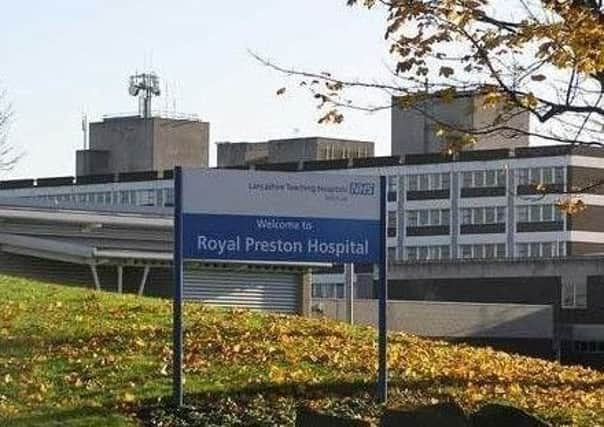Lancashire NHS posts £37m deficit


Lancashire Teaching Hospitals NHS Foundation Trust, which runs the Royal Preston and Chorley hospitals, was anticipated to post a deficit of £7,766,000 for the 2017/18 financial year.
But instead a report from NHS Improve, released today, shows it was £37,590,000 in the red - one of the worst financial performances in the whole of the North.
Advertisement
Hide AdAdvertisement
Hide AdOnly trusts in North Cumbria and Northern Lincolnshire had larger deficits.
Lancashire Care NHS Foundation Trust, which runs the county’s mental health services, posted a surplus of £4,843,000. The trust was also named as the best-performer for referral treatment times, with 99.22 per cent of patients being seen within the target time of 18 weeks.
Lancashire Teaching Hospital Trust’s parlous financial position mirrors the wider picture across the NHS.
Today’s report shows the NHS provider sector ended the financial year with a deficit of £960 million - £464 million above the plan set for the year.
Advertisement
Hide AdAdvertisement
Hide AdThe report also highlights that NHS providers in England did not meet targets for diagnostic tests, referral to treatment times and some cancer care targets.
The document, which covers “most challenging winter periods that the NHS has had”, shows that at the end of March 2018, 2,647 patients were waiting over a year for treatment compared to 1,513 the previous year.
It also is a “large increase” from the 2,179 waiting in February 2018.
Meanwhile, more than five million people attended A&E during January, February and March - which led to more than 1.1 million hospital admissions.
Advertisement
Hide AdAdvertisement
Hide AdDuring the final quarter of the year, 83.5 per cent of A&E patients treated by NHS providers across England were admitted, transferred or treated within the allotted four-hour time frame - a fall from 86.5% in the same quarter for the previous year, the report states.
The NHS Mandate states that 95% of patients attending A&E should be seen within four hours - the waiting time standard is seen as a key measure of how the NHS as a whole is performing.
But only five A&E departments managed to meet the 95 per cent target during January, February and March.
And half of the 10 “best performing” units didn’t even manage to meet the four hour target.
Advertisement
Hide AdAdvertisement
Hide AdThe rise in A&E activity also came at the expense of “more profitable” elective care. NHS Improvement said there was a “significant shortfall” of £505 million in elective and outpatient income against providers’ plans over the year.
Meanwhile, the report also highlights that the NHS provider sector ended the year with a “challenging level of vacancies” of more than 92,000 posts.
But NHS Improvement argued that the figures show that NHS staff displayed “incredible resilience” in meeting demand.
Meanwhile, it said that the NHS as a whole has “broadly achieved financial balance for the year” after NHS England provisionally reported that it had managed a £955 million underspend for the commissioning of healthcare services in 2017/18.
Advertisement
Hide AdAdvertisement
Hide AdBut it said the findings underline the need for long-term planning and security for the NHS.
Ian Dalton, chief executive of NHS Improvement, said: “Hundreds of thousands more patients have been to A&Es this year but the NHS did not buckle under the pressure.
“Despite epic challenges, NHS staff up and down the country displayed incredible resilience and saw more patients than ever before within four hours.
“More than two thirds of providers ended the year on budget or better than planned. Given rising demand and record vacancies, this is an important achievement.”
Advertisement
Hide AdAdvertisement
Hide AdCommenting on the report, Siva Anandaciva, chief analyst at health think tank The King’s Fund, said: “Unless the long-term funding settlement promised by the Prime Minister provides the stability the service desperately needs, it is clear that standards of care will continue to deteriorate and patients will wait longer to access NHS services.”